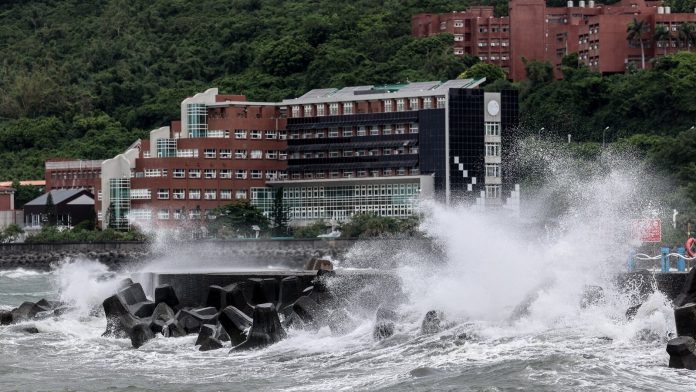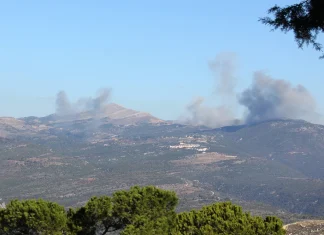Typhoon Podul’s Fury: Taiwan and China Brace as Storm Ravages and Rains Unleash Chaos
In the early hours of a restless autumn, the island of Taiwan found itself in the eye of a relentless storm named Podul—one that quickly decided to redefine the week for millions.
Imagine standing on the banks of the Pacific, feeling a sharp wind slicing through the humid air, trees bent under fierce gusts that roar like wild beasts. For the southern half of Taiwan, this was a reality as Typhoon Podul charged ashore, its winds at times gusting over 178 kilometers per hour before pounding into Taitung County. The Central Weather Administration (CWA) recorded these staggering numbers, a stark reminder of nature’s primeval power.
Lives Disrupted, Communities United
For many in Taiwan’s nearly 24 million people, life slowed to a standstill. Businesses shuttered, schools sent children home early, and transportation systems ground to a halt. Over 63,000 households sat in darkness, powerless as the storm knocked out electricity grids across the southern and central regions.
Lin Mei-hua, a resident of Kaohsiung—a bustling port city where the scent of the ocean mingles with the heat of street vendors—recalled the eerie calm, then the sudden onslaught: “The wind seemed to whisper threats at first, then turned into a roar. Our phone went dead, and for hours, we were just holding each other, waiting.”
By midday, fallen trees clogged the streets like broken sentinels, while swollen drains struggled against relentless rain. Kaohsiung, along with Tainan and Chiayi, emerged as the storm’s hotspots for heavy rain, with forecasts warning that up to 600 millimeters could fall in mountainous areas by daybreak.
Disaster officials scrambled. Over 8,000 people were evacuated, 112 people injured, and sadly one man fishing was swept away, lost to the storm’s merciless grip. The government mobilized more than 31,500 soldiers to support rescue and recovery, a testament to both the scale of the storm and the island’s readiness born from decades of typhoon experience.
Transport and Travel in Turmoil
In a show of precaution that speaks to the severity of Podul’s threat, the island’s entire domestic flight network was grounded, grounding hundreds of flights and leaving travelers stranded. International flights too faced cancellations, rippling disruptions far beyond Taiwan’s shores.
High-speed rail slowed to a crawl on the west coast, while train services vanished altogether in the southeast. Ferries, lifelines for island communities, ceased operations amid rough seas.
Chen Wei-li, a ferry operator near Penghu, said, “Safety comes first, but stopping means no work, no income for us. It’s tough, but we know the storm doesn’t wait for business.”
Beyond Borders: Mainland China Prepares for Podul’s Wrath
As Podul reached the Taiwan Strait, the Chinese provinces along the coast braced for its impending impact. CCTV—China’s state broadcaster—reported plans for landfall between Xiamen in Fujian and Shantou in Guangdong in the hours following Taiwan’s ordeal.
Schools in Guangdong were shuttered, and some train and ferry services paused temporarily. Inland provinces such as Hunan and Jiangxi were forecast to endure deluges, with heavy to torrential rain adding to the existing challenges in already vulnerable regions.
Wang Jian, an official in Xiamen, shared his thoughts: “We watch the storm’s every move with respect and preparedness. Our communities have learned hard lessons from past floods. This time, we are ready.”
The Bigger Picture: A Tidal Wave of Climate Change
Podul’s arrival is no isolated event but part of a building crescendo. Taiwan, proficient in weathering storms thanks to its geographic location in the Pacific typhoon belt, has faced an intense season already. Earlier this year, Typhoon Danas left a trail of destruction in its wake, killing two and injuring hundreds. Not long after, torrential rains dumped over two meters of rainfall across parts of the south—setting new records for 2024 and straining communities to their limits.
Farther north, mainland China’s summer has been a heavy one. Flash floods and mudslides claimed at least 13 lives in the northwest, while Beijing itself mourned 44 victims of unprecedented downpours and deadly landslides in the surrounding provinces such as Hebei.
Scientists like Dr. Sun Mei, a climatologist at Tsinghua University, caution that these patterns are not mere coincidence. “We are witnessing the growing fingerprints of climate change,” she explained. “Warmer oceans fuel stronger storms. The atmosphere’s capacity to hold moisture increases, meaning rains fall harder, floods rise bigger, and the damage escalates.”
When Every Drop Counts
Understanding the brutal mechanics behind Podul invokes a sobering question: how prepared are we to face a future where storms like these become the new normal? The tech-driven age may offer better forecasts and quicker communication, but when the storm cracks the sky and tears through forests and cities, human resilience is tested in its rawest form.
As temperatures rise globally, lessons emerging from the frontlines of typhoon season stretch beyond geography. They prompt a reflection on our collective role in carbon emissions, urban planning, and international cooperation on climate mitigation.
A Personal Reflection
Reading about Podul’s trail of havoc, it’s clear that typhoons are more than a meteorological phenomenon—they are moments when nature reminds us of its imperious and unpredictable force. Communities rally, governments mobilize, and individuals confront vulnerability.
In places like Kaohsiung, the story of survival is woven into everyday acts—neighbors helping neighbors clear debris, soldiers offering aid at evacuation centers, and families sharing simple meals amid power outages.
Have you ever experienced the hush of a town engulfed by storm, where the normal pulse of life gives way to the primal primal beat of waiting, hoping, enduring? These moments connect us, no matter where we live, reminding us of a shared human fragility and strength.
Podul’s Path Forward
- As Podul continues its march towards the Chinese mainland, emergency services remain vigilant.
- Residents along the southeastern coast are encouraged to follow safety advisories closely.
- Recovery efforts in Taiwan have already commenced, focusing on restoring power and clearing critical transportation routes.
- Experts urge governments worldwide to step up infrastructure resilience and climate adaptation strategies to confront more frequent intense storms.
In a world increasingly punctuated by extreme weather, Podul is another chapter—a raw, powerful reminder that the forces shaping our planet respect no borders. As communities rebuild and continue to brace for the next storm, the question remains: how will we rise to the larger climate challenge that storms like Podul forecast?










